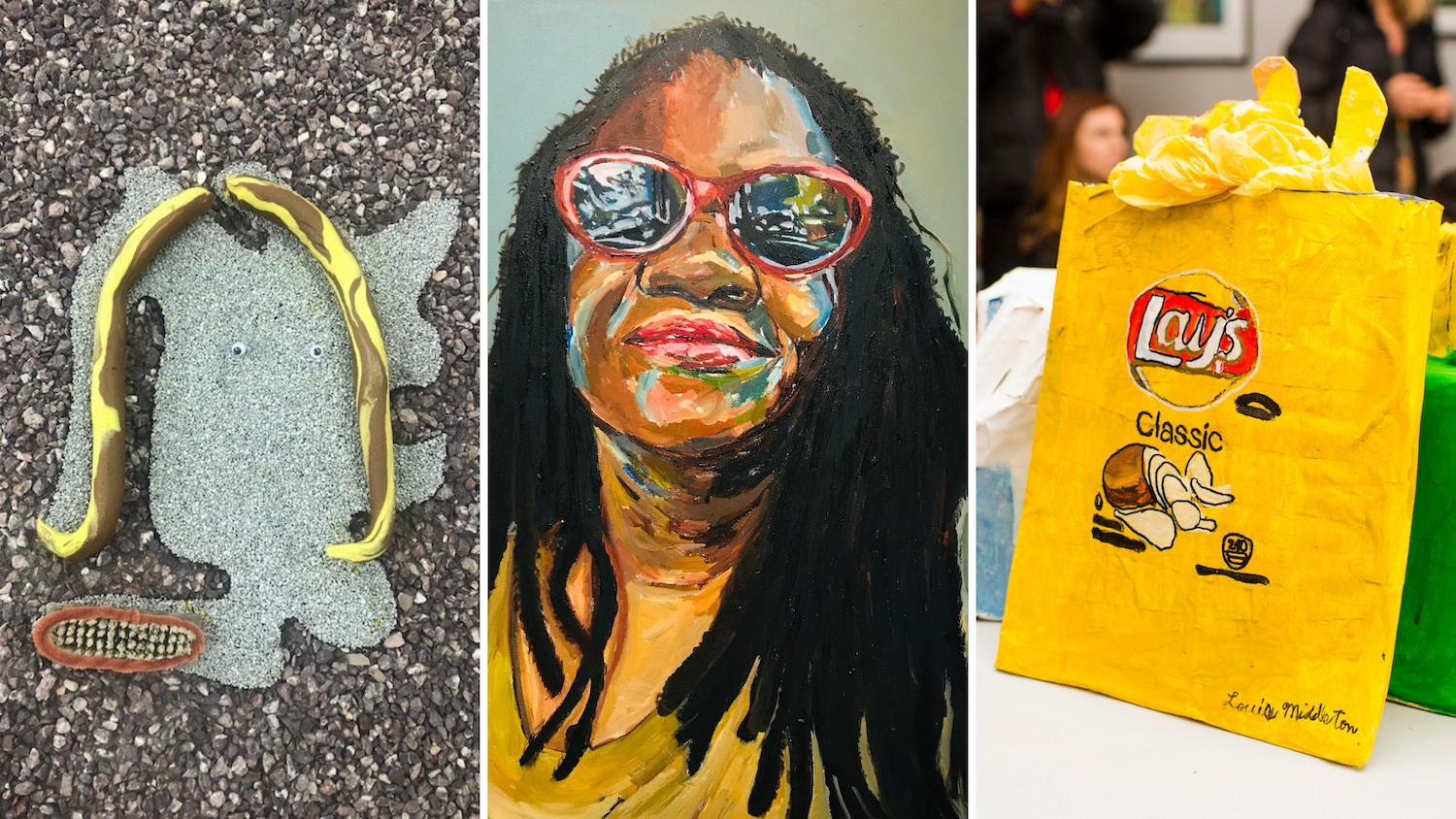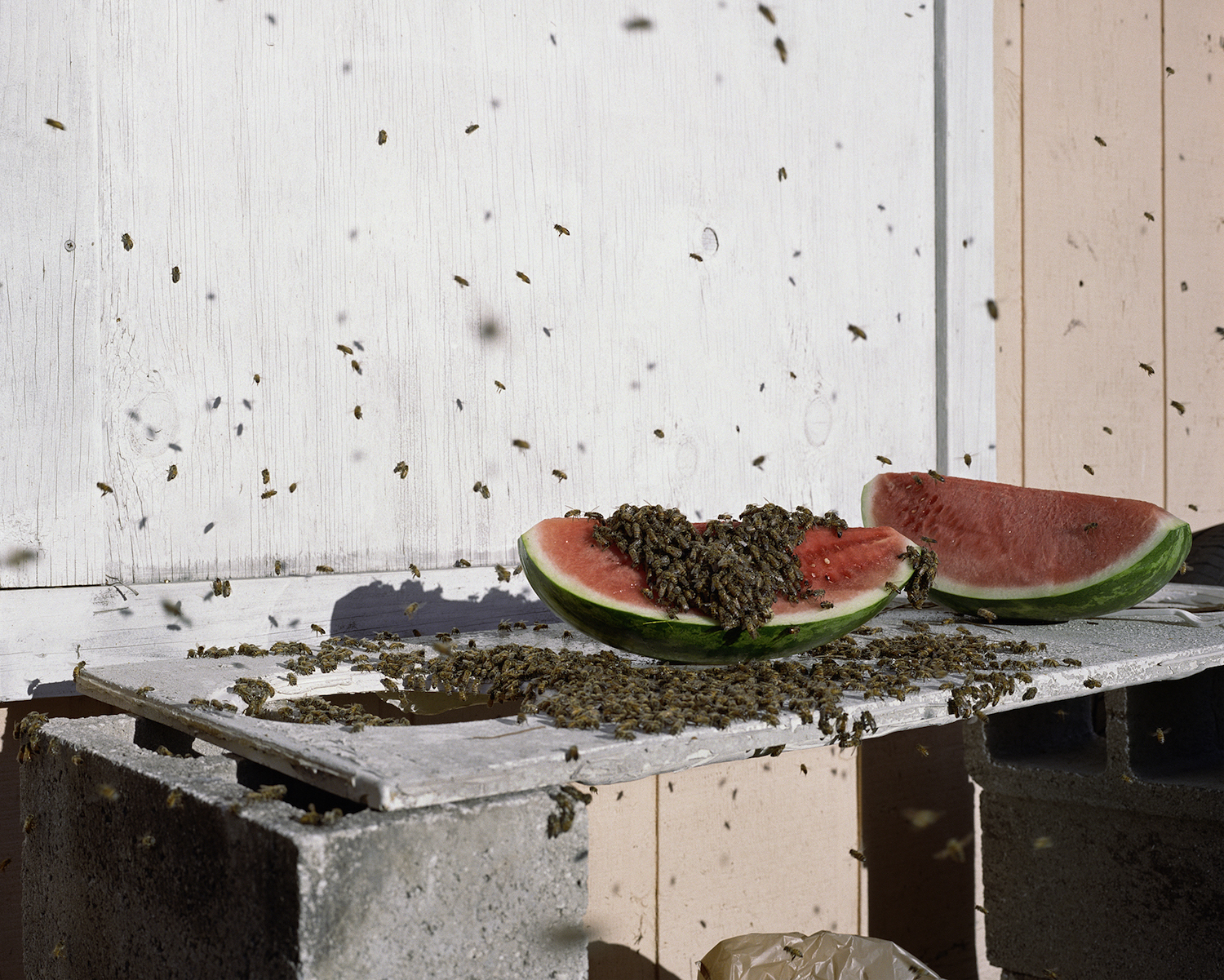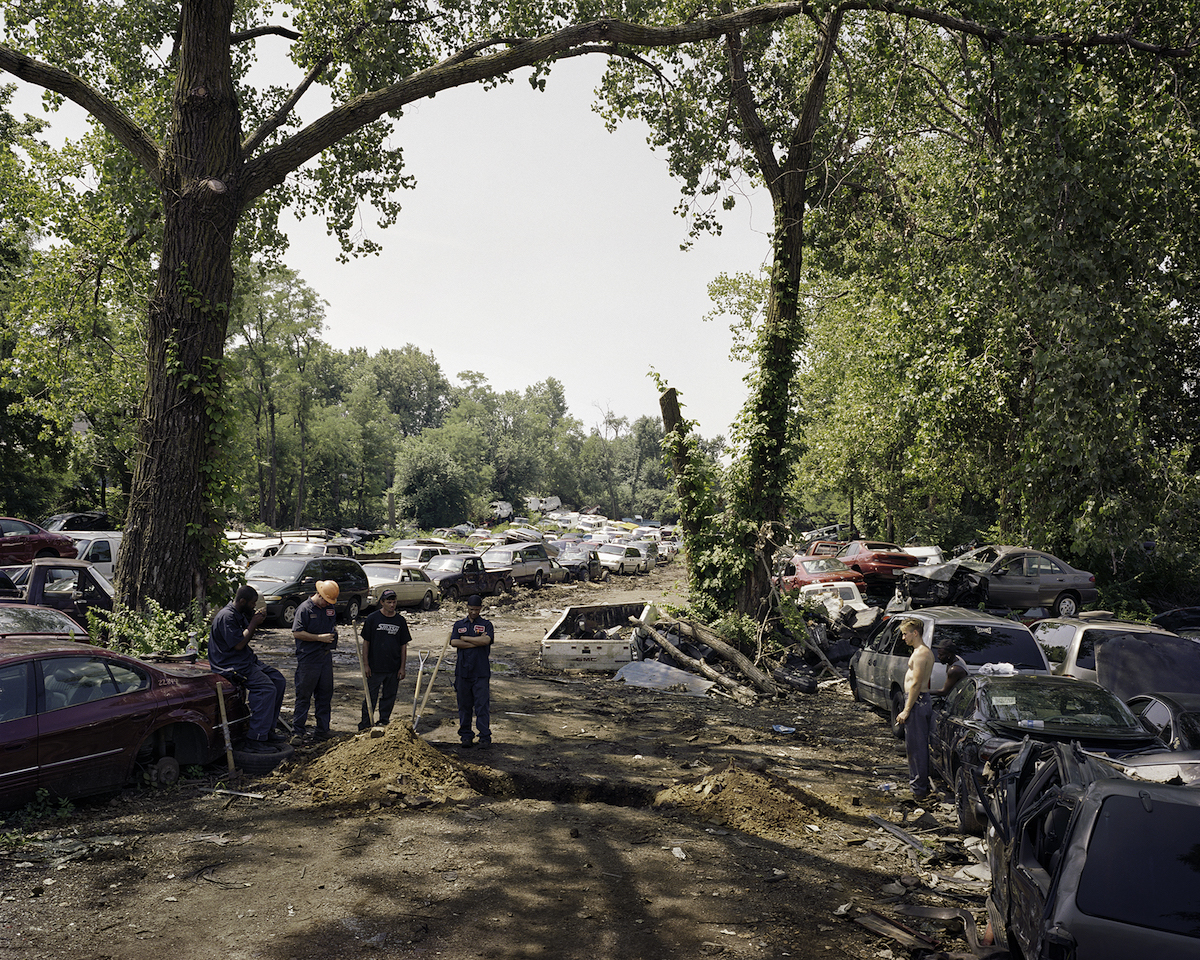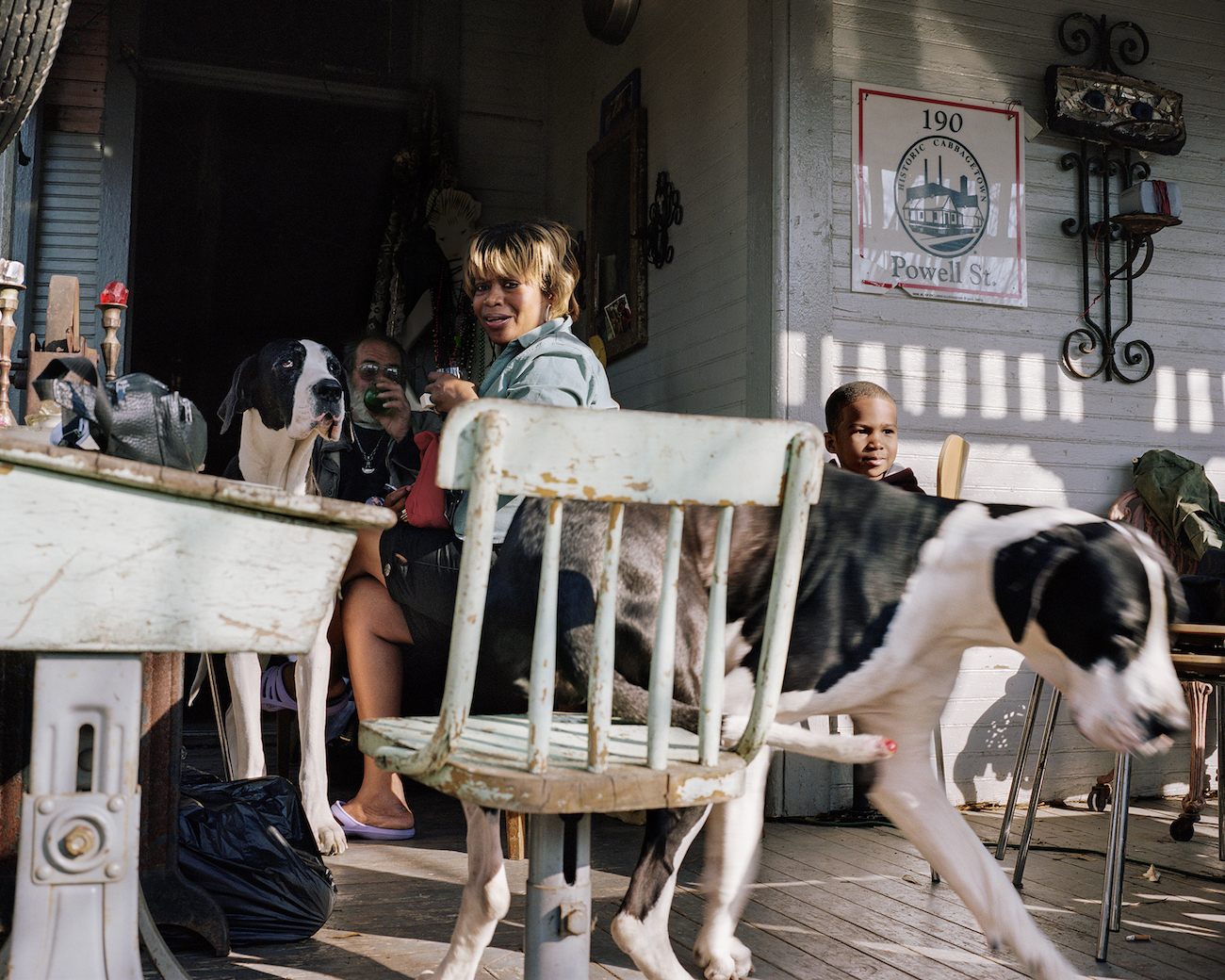Curran Hatleberg on the trust exchange in photography, the Book Thing, and the anxiety of influence
You might not have seen Curran Hatleberg’s work around Baltimore yet, but his color photos of American landscapes and people will stay with you once you do. Reminiscent of previous generations of documentary photographers, Hatleberg’s photography focuses not on the monumental but the everyday people and parking lots, back alleys, and porches of this country’s towns and rural communities. Originally from the Washington, DC area, Hatleberg moved to Baltimore within the last year with his partner Cynthia Daignault. The duo have purchased a building in the Remington neighborhood and will be opening an exhibition space later this year.
The 36-year-old photographer is the only Baltimore-based artist in this year’s Whitney Biennial. We chatted with him over email about his process, his work, and what Baltimore means to him.
Suzy Kopf: Looking at your photos, I see an affinity with other American photographers who have used color photographs to record the landscape and its people, notably Stephen Shore and William Christenberry. How do you situate your work in relation to theirs?
Curran Hatleberg: These are certainly artists with whom I feel a kinship. Shore and Christenberry are photographers I have looked at a lot, among others—too many to name here. Like them, many photographers have taken to the road, relying on instinct and chance. As those before me, I strive to make a statement about individual experiences through photography while simultaneously gaining deeper insight into the American experience.
Eventually every artist has to overcome the anxiety of influence, but it’s hard to be the artist that you are, not the one you want to be. Ultimately an artist must take from tradition without being bound to it. I still page through the books of my heroes regularly, if only to remind myself how exceptional a work of art can be and how much farther I still have to go.
You’ve experimented a bit with bookmaking. How do you decide a series needs to be a book? What about the format do you like?
Books are incredibly important to my practice for a number of reasons. In general I think my work is less about the individual frame, and more about the aggregate experience of the series. The book format allows the works to remain as a collected group, a linked chain moving forward in a linear progression, where each picture builds upon the last. Within that structure the potential for dramatic rise and fall of narrative sequence can occur. Also, I like the intimacy of a book and the sustained scrutiny it affords. Being able to view a work at one’s own pace is a major benefit. Books are more populist than the gallery setting and able to be distributed to a large group of people. As a book my work can travel to all the small corners of America, outside of the bigger art markets.
You’re originally from Washington, DC, but you’ve made pictures throughout the country. What attracts you to a location as a subject?
All of my work originates from a curiosity and a desire to express that mystery in photographs. This often starts with a location. When I am looking for a place to work, I am looking for something unexpected in the hope of learning something that I didn’t already know. I feel a specific devotion to the unknown, and because of that I end up places by chance. I try to get lost. In a sense, I could say that chance and accident are the foundation of my entire practice.
Many of your photographs include people it seems likely you’ve just met. How do you get a subject to trust you enough to take their image? Do you ever stay in touch with subjects, perhaps showing them the resulting photos months later?
Sometimes I’ve known someone a few moments, sometimes I’ve known them for months or years. In either case the work involves a great deal of trust-building and mutual curiosity. Photographing is an exchange and we both have to set the terms of what we’re getting and giving.
There’s no shortcut or secret to asking someone for their picture. At times, it can be an uncomfortable process. Once someone accepts, I relinquish control to them. I rely on my subjects to direct and shape the moments I record; they are in charge and anything can happen. I could never guess where they might take me, who they might show me, or what they might choose to reveal of themselves.
As far as staying in touch with subjects, it varies greatly. I try to keep in contact, but the success of that effort is case by case. It just depends. When I do see someone again, I often give them photographs. Regardless of the amount of time shared, at the end of the day my work is about personal connection. It’s essential for me to have participated in a collaborative experience with that other person. For me, that’s the whole point.
As a result of your many road trips to make pictures, it is likely you’ve seen much more of America than most of us ever will. Any standout favorite towns? Best hamburger? Nicest campsite or cheap motel?
For sure, there are many special places out there. There are countless towns and bars and state parks that are memorable. Wild Bill’s in Memphis is one. Pico de Gallo in Tucson is another favorite. I could go on and on. That said, the luck of the weather, company or personal mood in the moment can always make or break an experience. Timing is everything.
I’ve found that most times when I try to go back to a place to recreate an experience it can be disappointing. Especially if the first visit was unusually vivid or intense. It’s so easy to be focused on nostalgia that it can override the present moment. I suppose it’s impossible to fully return to anything or anyone, and nothing in the past can ever be retrieved.
What has attracted you to Baltimore as a place to live, work, and, soon, open a space with your partner, the painter Cynthia Daignault?
What can I say? Baltimore is amazing. Cynthia is from here, our families are both in the area, and things just fell into place with the move. It’s a city with a beautiful mix of cultural influences. Just as I was saying about choosing my photographic locations, there was a lot of gut feeling involved in our decision. We both love the city, its people, and its history. We wanted to be in a place with a well-established arts community, and in the short time I’ve been here, I have already made lifelong friends. That said, the city is still a relatively new home for me, and I’m really enjoying exploring and learning.
Oh, also: the Book Thing. The Book Thing is everything.
While you’re not teaching right now, you’ve taught at the Cooper Union and lectured at Yale, your alma mater. What is something you really stress to your students, be it about craft or professional practices?
I can think of two things offhand. First and foremost, work like there’s no plan B. One has to get obsessed. It takes an absurd amount of blind ambition to do anything meaningful. What’s the old cliche? There’s no talent, just hard work. You can’t fake the work.
Secondly, find a creative community. It might be grad school, a gallery scene or something else—no matter who they are, the people of that community will ultimately provide the essential balancing act of both criticism and support that every artist needs to survive. The idea of singular genius is a joke. An artist needs people. With the help of those peers an artist can foster hard work and meaningful dialogue. These things are critical.
Congratulations on your inclusion in the Whitney Biennial. It’s a huge achievement for an artist and obviously a career highlight. What can you share with us about the selection process and the work you’ll be exhibiting?
Thank you so much! I am so very grateful that Jane Panetta and Ru Hockley [curators of this year’s Whitney Biennial] believed in what I was working on. I am so honored, and honestly it’s still a great shock. It was very unexpected.
The pictures in the show will represent a piece of a larger project that is still building itself. Eventually these works will grow into another more extended exhibition and monograph. That’s all I can say for now.
Photographs courtesy of the artist and Higher Pictures, New York










